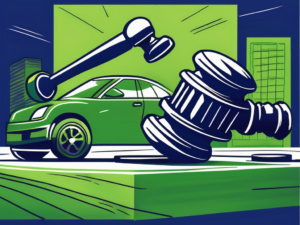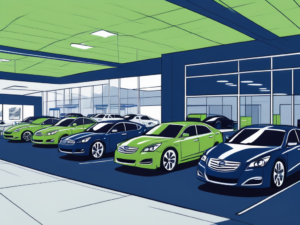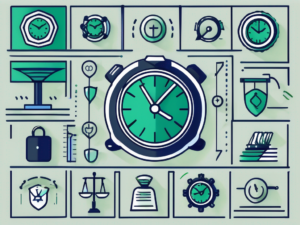Talk to Sales: (401) 200-6026

In today’s competitive business landscape, effective dealer communications are crucial for achieving improved business outcomes. The ability to communicate efficiently and transparently with dealers is essential for building strong partnerships, driving sales, and maintaining long-term customer satisfaction. This article will delve into the importance of dealer communication, strategies for enhancing it, overcoming challenges, measuring its impact, and exploring future trends in this vital area.
Understanding the Importance of Dealer Communications
Dealer communications play a pivotal role in the success of any business. By establishing effective lines of communication, companies can bridge the gap between themselves and their dealers, fostering collaboration and trust. When communication is open and transparent, dealers feel valued and supported, leading to increased loyalty and motivation. Moreover, effective dealer communications streamline processes, reduce errors, and ensure that information flows smoothly.
But what exactly does effective dealer communication entail? It goes beyond simply sending out emails or making phone calls. It involves creating a comprehensive strategy that encompasses various channels and methods of communication. This can include regular meetings, webinars, newsletters, and even social media platforms. By utilizing a multi-faceted approach, businesses can ensure that their messages reach dealers in a timely and impactful manner.
The Role of Dealer Communications in Business
In a business environment that is constantly evolving, effective dealer communications provide a solid foundation for success. They enable organizations to share vital information, such as product updates, pricing changes, and marketing campaigns, in a timely manner. By keeping dealers well-informed, businesses can drive customer satisfaction, boost sales, and ultimately enhance their bottom line. Dealer communications also facilitate feedback and problem-solving, enabling companies to address issues promptly and efficiently.
Imagine a scenario where a company launches a new product without effectively communicating the features and benefits to their dealers. The dealers, in turn, are unable to convey this information to potential customers, resulting in missed sales opportunities. On the other hand, with clear and timely communication, dealers can confidently promote the product, leading to increased sales and revenue for the company.
Key Benefits of Effective Dealer Communications
There are several benefits to improving dealer communications:
- Increased Efficiency: Effective communication reduces misunderstandings and ensures that important information is delivered accurately and promptly. This saves time and resources for both the company and the dealers, allowing them to focus on their core tasks and responsibilities.
- Improved Collaboration: Clear and open communication fosters a collaborative environment, allowing businesses and dealers to work together seamlessly. When dealers feel that their input is valued and their ideas are heard, they are more likely to actively contribute to the success of the business.
- Enhanced Customer Satisfaction: When dealers are well-informed and equipped to address customer needs, satisfaction levels rise, leading to repeat business and positive referrals. Effective dealer communications enable dealers to provide accurate and up-to-date information to customers, ensuring a positive buying experience.
- Competitive Advantage: By strengthening dealer relationships, organizations gain a competitive edge, as dealers become loyal promoters of the brand. When dealers feel supported and valued, they are more likely to prioritize the company’s products over those of competitors, leading to increased market share and brand loyalty.
It is important for businesses to recognize that effective dealer communications require ongoing effort and investment. Regular evaluation and improvement of communication strategies are necessary to adapt to changing market dynamics and dealer needs. By prioritizing dealer communications, businesses can build strong and mutually beneficial relationships with their dealers, driving long-term success.
Sell cars on the lot faster with AutoRaptor
Know if we’re the right fit within 10 minutes
Strategies for Enhancing Dealer Communications
Effective dealer communications are essential for businesses to thrive in today’s competitive market. By implementing various strategies, organizations can strengthen their relationships with dealers and ensure seamless collaboration. In this article, we will explore two key strategies for enhancing dealer communications: leveraging technology and investing in training and development.
Implementing Technology in Dealer Communications
In today’s digital age, leveraging technology is crucial for enhancing dealer communications. Organizations should consider implementing robust communication platforms that facilitate real-time messaging, video conferences, and document sharing. These platforms provide a convenient and efficient way for businesses to connect with dealers effortlessly, regardless of geographical barriers.
With real-time messaging, businesses can have instant and direct communication with dealers, allowing for quick problem-solving and decision-making. Video conferences enable face-to-face interactions, fostering a sense of connection and trust. Document sharing features ensure that all relevant information is easily accessible to dealers, eliminating the need for lengthy email threads and reducing the risk of miscommunication.
Additionally, automated notifications and alerts can keep dealers informed of important updates, ensuring that nothing falls through the cracks. Whether it’s notifying dealers about new product launches, changes in pricing, or upcoming training sessions, automated systems provide timely and consistent communication, keeping dealers engaged and well-informed.
Training and Development for Improved Communication
Investing in training and development programs is another crucial strategy for enhancing dealer communications. By equipping dealers with the necessary skills and knowledge, businesses can empower them to communicate effectively and build stronger relationships.
Providing workshops and educational resources on topics such as active listening, negotiation, and conflict resolution can significantly improve dealer communication skills. Active listening workshops teach dealers how to fully understand and empathize with customers’ needs, leading to more effective problem-solving and customer satisfaction. Negotiation training equips dealers with the skills to navigate pricing discussions and contract negotiations, ensuring mutually beneficial outcomes. Conflict resolution workshops help dealers handle challenging conversations and resolve conflicts in a constructive manner, preserving relationships and avoiding unnecessary disputes.
Ongoing training is crucial to ensure that dealer communications remain effective as the business landscape evolves. By offering continuous learning opportunities, businesses can encourage dealers to stay updated with industry trends, new communication techniques, and emerging technologies. This commitment to training demonstrates a dedication to excellence in dealer communications and fosters a culture of continuous improvement.
In conclusion, enhancing dealer communications requires a multi-faceted approach. By leveraging technology and investing in training and development, businesses can create a robust communication ecosystem that fosters collaboration, trust, and mutual success with their dealers. Implementing these strategies will not only improve communication but also contribute to the overall growth and success of the business.
Overcoming Challenges in Dealer Communications
Identifying Common Obstacles in Dealer Communications
While effective dealer communications are crucial, challenges can arise that hinder their success. Some common obstacles include:
- Information Overload: Dealers can become overwhelmed if they receive excessive or irrelevant information, leading to important messages being overlooked.
- Misalignment: Miscommunication can occur when business objectives, strategies, and expectations are not clearly communicated to dealers.
- Language and Cultural Barriers: In a global marketplace, language and cultural differences can impede effective communications, leading to misunderstandings and frustration.
Solutions for Communication Challenges
To overcome these challenges, businesses can implement the following strategies:
- Streamline Information: Ensure that information shared with dealers is essential, relevant, and concise, avoiding unnecessary overload.
- Establish Clear Expectations: Clearly communicate business objectives and strategies to dealers, ensuring mutual understanding and alignment.
- Provide Language Support: Offer translation services or multilingual resources to bridge language and cultural barriers, ensuring effective communication.
- Promote Two-Way Feedback: Create a culture of open communication, encouraging dealers to provide feedback and address concerns, fostering collaboration and improvement.
Sell cars on the lot faster with AutoRaptor
Know if we’re the right fit within 10 minutes
Measuring the Impact of Improved Dealer Communications
Key Performance Indicators for Dealer Communications
Measuring the impact of improved dealer communications is vital for identifying areas of success and uncovering areas that require further improvement. Key Performance Indicators (KPIs) to consider include:
- Response Time: Measure the time taken to respond to dealer inquiries, ensuring timely and efficient communication.
- Dealer Satisfaction: Survey dealers to gather feedback on their satisfaction levels with the communication processes, evaluating effectiveness.
- Communication Channel Utilization: Monitor the usage and engagement levels across different communication channels (e.g., email, chat, phone) to identify preferred methods and opportunities for improvement.
- Business Performance: Analyze sales figures, growth rates, and customer feedback to assess the impact of improved dealer communications on business outcomes.
Interpreting the Results and Making Adjustments
After measuring the impact, it is essential to interpret the results and make necessary adjustments. Analyze trends and feedback to identify areas of improvement. Regularly review and refine communication processes, leveraging insights gained from data analysis and dealer feedback. By continuously adapting and evolving, businesses can ensure their dealer communication strategies remain aligned with changing needs and industry expectations.
Future Trends in Dealer Communications
The Role of Digital Transformation in Dealer Communications
As digital transformation continues to reshape business operations, the role of technology in dealer communications will become increasingly prominent. Artificial intelligence, machine learning, and data analytics will empower businesses to personalize and automate communications with dealers, resulting in enhanced efficiency and accuracy. Furthermore, cloud-based platforms will facilitate seamless collaboration, ensuring real-time information sharing and access from anywhere, anytime.
Predictions for the Future of Dealer Communications
Looking ahead, advancements in communication technology will enable businesses to overcome geographical barriers and foster stronger connections with dealers globally. We anticipate an increase in virtual reality (VR) and augmented reality (AR) solutions, enabling immersive training experiences and remote collaboration. Moreover, predictive analytics and sentiment analysis will enable organizations to proactively identify potential communication challenges, allowing for swift resolution.
In conclusion, enhancing dealer communications is essential for improving business outcomes. By understanding the importance of effective dealer communications, implementing strategies to enhance them, overcoming challenges, measuring their impact, and embracing future trends, businesses can build strong partnerships, drive success, and stay ahead in today’s dynamic market.
Want to improve your sales and move cars off the lot faster? Book a test drive with AutoRaptor to see how our simple dealership CRM software can help you close more deals effectively.
Subscribe to our Newsletter
Resources to help your dealership convert more leads into sales, retain more customers, and market inventory smarter, straight to your inbox every Sunday.




